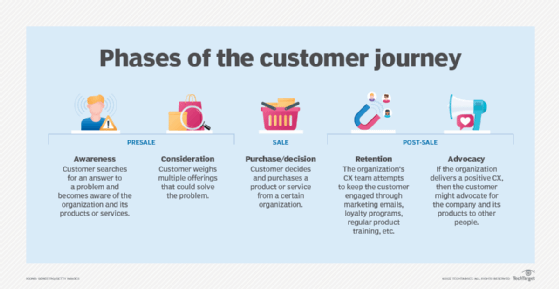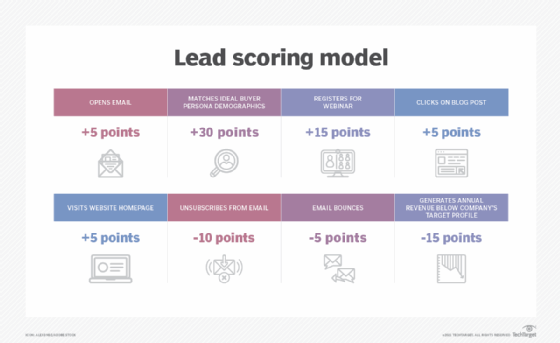
Getty Images/iStockphoto
Marketing automation checklist for beginners
How can SMBs and small marketing teams develop a proper marketing automation strategy? With a checklist. Here's what to include in a checklist for a successful strategy.
If small marketing teams and SMBs can streamline communications, analyze customer data and automate routine tasks, they can grow their business.
However, small marketing teams must understand the business's requirements and properly scope any needs or use cases before choosing a marketing automation platform. A marketing automation checklist of these requirements can help the teams choose a tool and work with an onboarding team to implement it correctly.
However, with a sea of options available, selecting the right tool is no easy feat, and ensuring the business can onboard it is critical for success and scalability.
Why create a marketing automation checklist?
Every business is unique, with its own goals, challenges and processes. By defining its requirements, marketing teams can identify what capabilities and features their marketing automation software needs to ensure it can support the overall marketing strategy. For instance, if a business heavily relies on email marketing, then a platform with extensive email automation features is ideal.
Additionally, a marketing automation checklist helps selection committees comprehend the scale at which the platform must operate. It helps the business anticipate future needs as it grows, avoiding potential scalability issues. This involves considering the number of users, the volume of data it should handle or the complexity of its automation workflows.
If the business understands its overall requirements and scoping needs, it can streamline the software selection process. With a clear set of criteria, teams can more efficiently evaluate different platforms and make an informed decision. A checklist also prevents decision-makers from being swayed by flashy features that aren't needed, which can lead to unnecessary expenses.
Explore items a marketing automation checklist must have to ensure SMBs and small marketing teams choose the right tool for their individual needs.
1. Define the goals
Before a team starts looking into platforms and features, they must understand what they want to achieve with marketing automation. Whether they want to increase lead generation by 30% or simplify the purchasing process to improve customer retention, the team can set SMART (specific, measurable, achievable, relevant and time-bound) goals to guide them and better inform the necessary features for marketing automation software.
2. Outline the customer journey
If SMBs understand how customers interact with their brand, they are more likely to have a successful automation strategy.
Marketers can map out every touchpoint -- from discovery to post-purchase -- and identify opportunities where automation can streamline the process without disrupting CX. A customer journey map can also identify which tools can best deliver more personalized content to users, which can help SMBs deliver positive CX as customers consider their buying decisions.

3. Segment the audiences
Not all customers are created equal, so marketing activities shouldn't treat them as such. Effective customer segmentation can enable more targeted and effective messaging.
Criteria like purchase history, website activity and geographic location can tailor campaigns and touchpoints to the specific needs and interests of different customer segments. Marketers can combine the creation of different persona groups with the customer journey to ensure content reaches users at the right spot in their journeys.
4. Know what to automate
Access to an automation tool doesn't mean marketing teams should automate everything. Some tasks are best left to the human touch, especially those involving creativity and personal interaction.
When determining an implementation plan for marketing automation software, teams should focus on automating routine tasks, be data-driven and think about the ideal engagement touchpoints that can lead to more efficient customer interactions, such as email campaigns, social media scheduling and CRM updates.
5. Select the right platform
The market for marketing automation software is saturated, so as teams determine their requirements and research potential platforms, they can create a short list of vendors to evaluate.
When choosing marketing automation software, teams should consider factors like UI, available features, price and possible integrations with their existing software stack. They should also pay close attention to user reviews and ask for demonstrations or trials to get a feel for how the platform will work for the team.
6. Implement a strong CRM system
A CRM system should be at the heart of any marketing automation strategy. It must store customer data and be easy for users to interact with. Marketing teams can evaluate whether their potential marketing automation platform has solid CRM as part of its feature set or if it can easily integrate with one so data flows seamlessly between systems.
7. Focus on lead scoring
Lead scoring is a method of ranking leads according to their sales readiness. It helps sales prioritize high-value leads and can increase their efficiency, as the team can focus on the right leads.
A good marketing automation platform offers customizable lead-scoring features that align with any sales process. Lead scoring can include persona-based scores for contacts who match the ideal customer profile or activity-based scores for contacts who frequently engage with the marketing campaigns. For example, they may download content, visit a pricing page, open an email or request a demo.

8. Emphasize content marketing
Content marketing plays a vital role in attracting and retaining customers -- especially in terms of content. Marketing automation can support content marketing strategies with tools for content creation, curation and distribution. Teams should look for platforms that make it simple to create email newsletters, landing pages and other content, as well as track the performance of these assets.
9. Integrate social media
Social media is a significant touchpoint within the customer journey, so integration between social channels and marketing automation software is key to a cohesive marketing strategy. Teams should look for platforms that offer advanced social media features, such as social listening, scheduling and analysis, to ensure the business engages with target audiences across all channels effectively.
10. Use APIs
For a marketing automation platform to truly work for an SMB, it must be able to communicate with other tools in the company's tech stack. APIs play a crucial role here, as they can enable data to flow between different systems. Marketing teams should choose a platform with an open API ecosystem or that offers a range of native integrations.
By ticking off each point on this checklist, SMBs can make a well-informed decision when selecting a marketing automation tool that fits their business objectives and enhances their marketing strategy. It's not just about finding the most feature-rich tool, but finding one that best fits an SMB's unique needs and can grow alongside the business.
Griffin LaFleur is a MarketingOps and RevOps professional working for Swing Education. Throughout his career, Griffin has also worked at agencies and independently as a B2B sales and marketing consultant.






